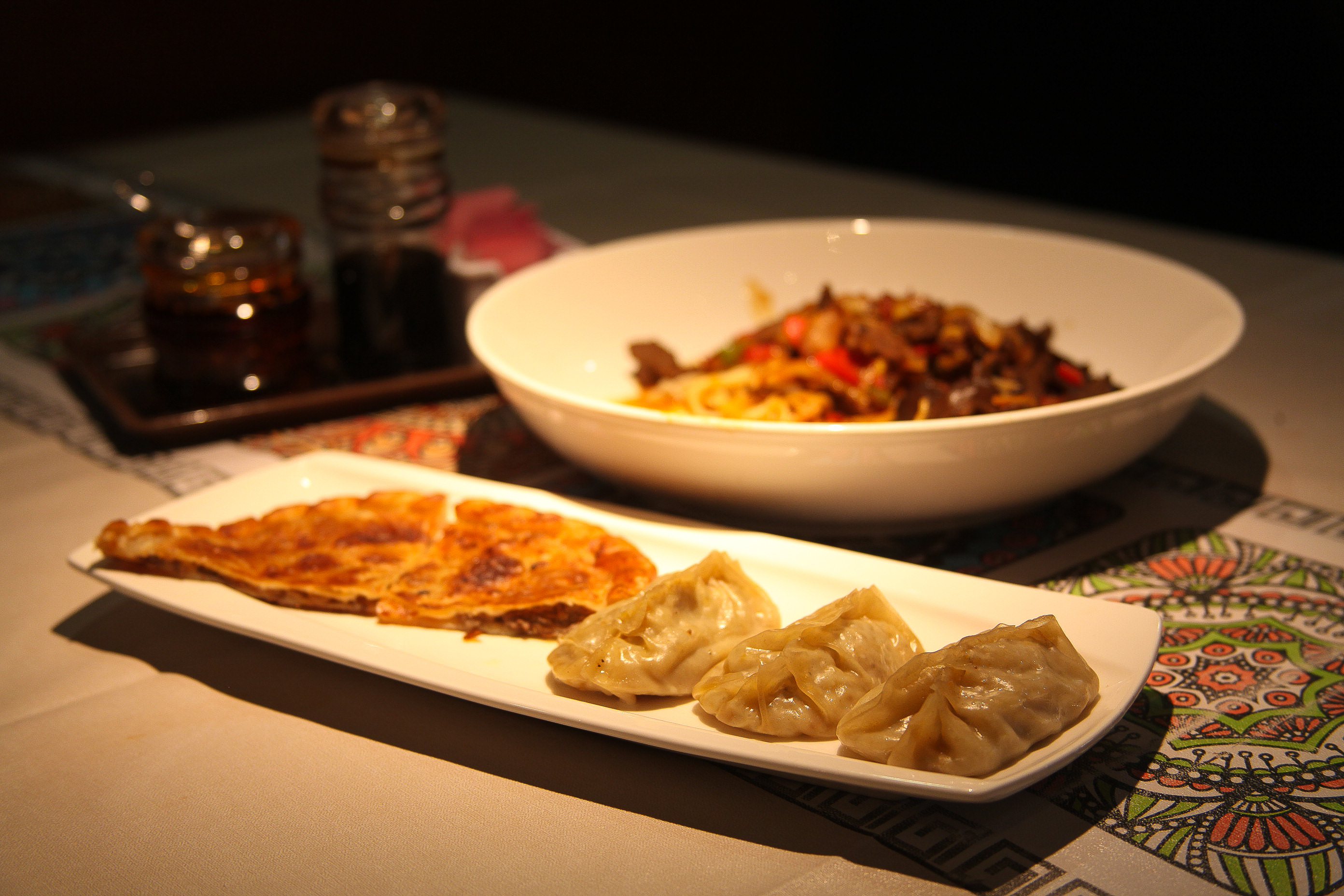
Menlo Park, California – Sometimes she did not see her parents all day. They were gone before she woke up in the morning, and they came home at night after she had fallen asleep.
As a child, it made Almira resent the restaurant business they ran. “God, this is tiring,” she remembers thinking, as she watched her parents shape their lives around the mealtime rush. There were always appliances to fix, inventories to take, and emergency shopping to complete.
The constant rush left young Almira determined to take a different path. “If I grew up, I wouldn’t do this business stuff. I wouldn’t even go to get a part-time job in a restaurant,” she decided.
But a passion for food – and a homesickness for the flavours of her childhood – would conspire against her. “Guess what? Twenty-six years later, I’m working in a restaurant.”
Almira and her older sister Kalbi are the founding forces behind Mrs Khan Uyghur Cuisine, a new restaurant nestled in the heart of Silicon Valley, California, a centre for technology in the United States.
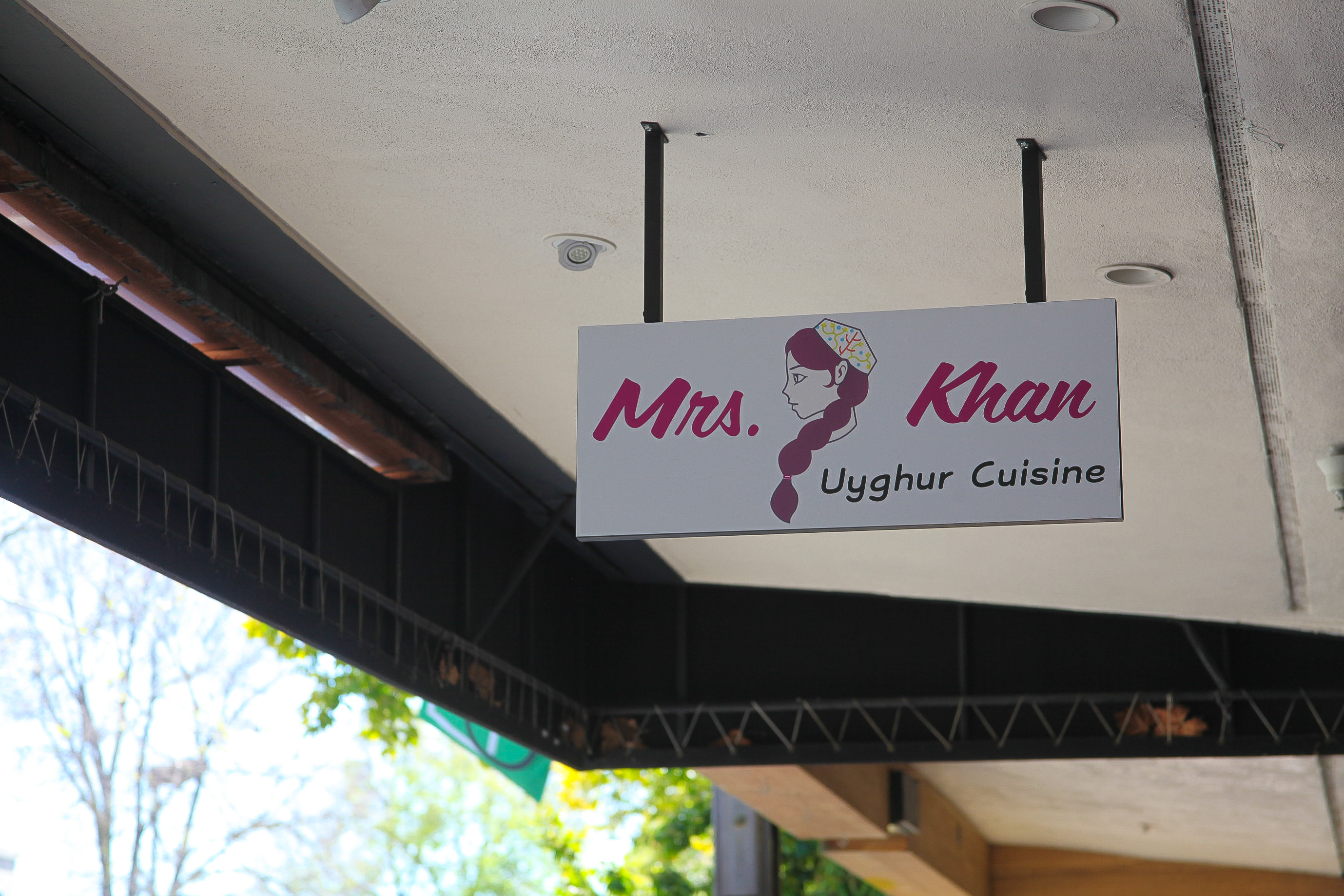
Theirs is a relatively rare offering for the region: a menu stocked with Uighur specialities, from springy hand-pulled laghman noodles to flat disks of savoury gosh naan pastry, blistered in the pan for extra crunch.
But running a Uighur restaurant in the US means educating a public largely unfamiliar with what it means to be part of the Turkic ethnic group, whose homeland sits in Central Asia.
A few customers have asked Almira: Is Uighur a country? Are Uighurs poor? Why doesn’t your menu have the Chinese food typically available in the US, like orange chicken, tofu and string beans?
Almira does her best to explain. But it’s a delicate task. She is originally from Xinjiang, an autonomous region in northwest China, though she prefers to refer to her homeland as East Turkestan.
There, the United Nations has accused Chinese authorities of committing “serious human rights violations” against Uighurs and other predominantly Muslim groups, including through “systems of arbitrary detention and related patterns of abuse”.
China has denied such accusations as “groundless”. But the repression in Xinjiang makes questions of Uighur identity particularly sensitive. As a result, Almira has asked to be identified by her first name only, in order to protect her family’s safety.
For the same reason, she likes to keep the focus on her business, where identity can be navigated through spice, sauce and culinary techniques. “It’s a mix of cultures and is very unique,” Almira explained.

Located along historic Silk Road trading routes, the Uighurs’ homeland brought together influences from east to west, north to south.
Teas from China blended with local milk and fruits. Clay tandoor ovens, often thought to have originated in India, lay the groundwork for household tunurs – a variation on the term “tandoor”. And a panorama of ingredients native to Central Asia – from cumin to carrots, sheep to almonds – melded together to create a distinctly regional taste.
Almira remembers falling in love with the cuisine when she was only five years old. Up until that point, she had been raised in a distant relative’s house: Her mother had fallen ill, and Almira was sent away to a small village while she recovered.
“There was nothing but just homemade food, day in and day out. Every day, the same thing,” Almira recalled of village life. But when her father brought her home to the city, she discovered shopping centres and restaurants and an array of flavours she had never experienced before.
“And on my first birthday when I got back to the city, my dad got me a cake, a pink cake,” she remembered.
Her parents promised to serve her a slice and celebrate with her when they returned from the restaurant that evening. All day long, Almira waited, dreaming of the cake, its creamy texture drawing her in.
But as afternoon turned to evening, she grew tired. And before she knew it, she had fallen asleep. “At midnight, I woke up because I had been thinking about that thing called cake,” Almira explained. “And I saw they had put it outside.”
Winters were so cold in her home city that families like hers had no need for freezers: They could simply store meat and perishables outdoors. Tired of waiting, Almira snuck out, opened the cake box and plunged her fingers inside.
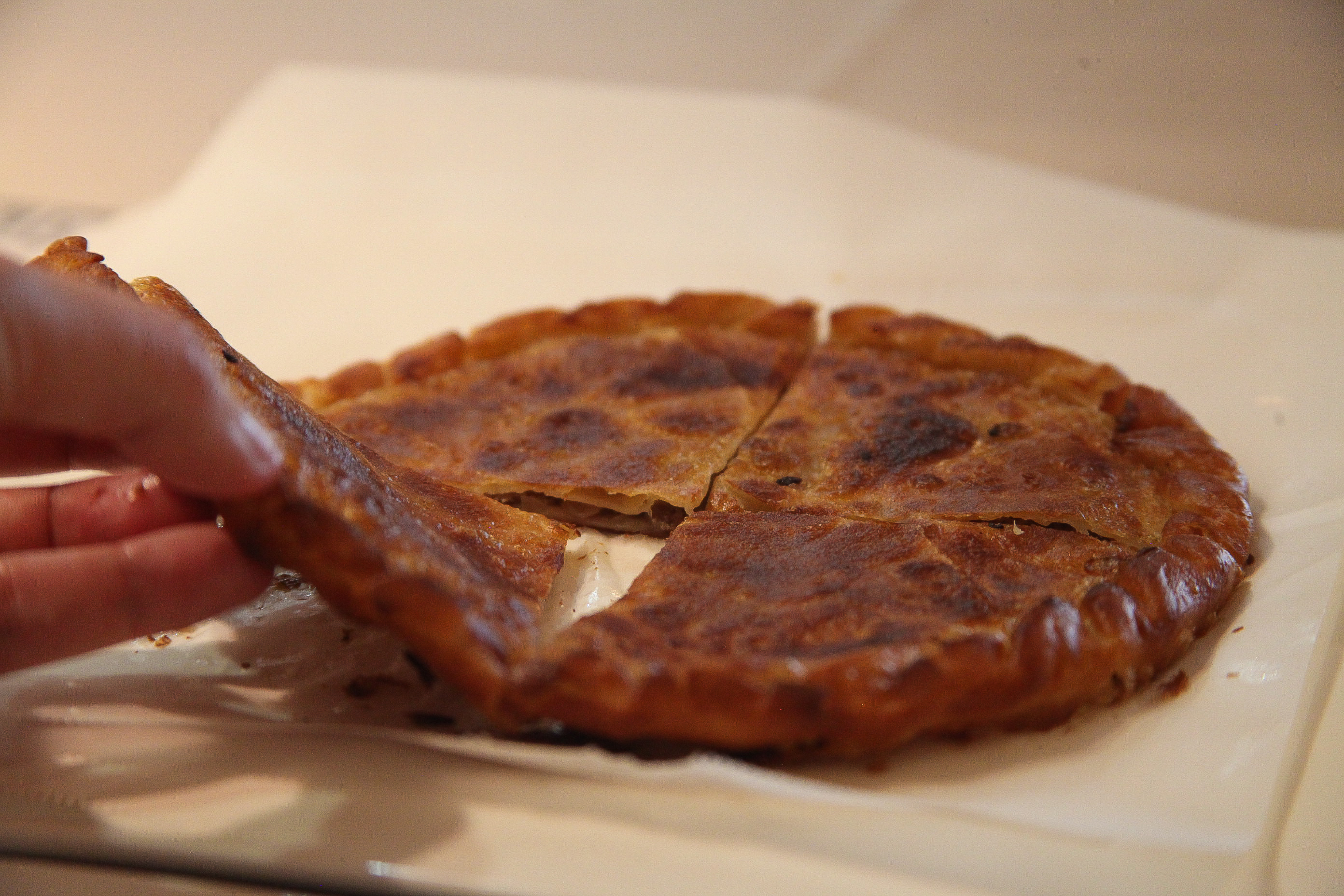
“The next day, when I woke up, oh God! Everyone was looking: ‘Who’s the thief that opened the cake and ate a couple of bites of it?’” Almira confessed it was her.
“I had not had such a thing in the village,” she explained. The temptation had simply been too great.
Every day from then onwards was a discovery: “I was like, ‘Oh, there is this kind of food called kebab. This is so nice! Oh, this bone soup is good too!’ I would start eating, and I would never get full.” Her appetite was so voracious that her mother began to speculate she might have an intestinal worm.
But Almira was hardly alone. Food was a family obsession, so much so that her parents would pack Almira and Kalbi into the car and embark on epic six-hour road trips, just to try out new restaurants.
Each person in Almira’s family introduced her to different tastes. Her mother championed spicy dishes and hotpots. Her father, traditionally cooked plates. And her aunt was a connoisseur of snacks and junk food, like cold noodles in a spicy “malatang” broth.
Their passion was infectious, and Almira and Kalbi were soon experimenting in the kitchen themselves. Almira remembers that she was five, and Kalbi 10, when they tried to make their first dish together: a simple meal of scrambled eggs.
“It turned black,” Almira laughed, looking back. “We had to throw it in the trash.”
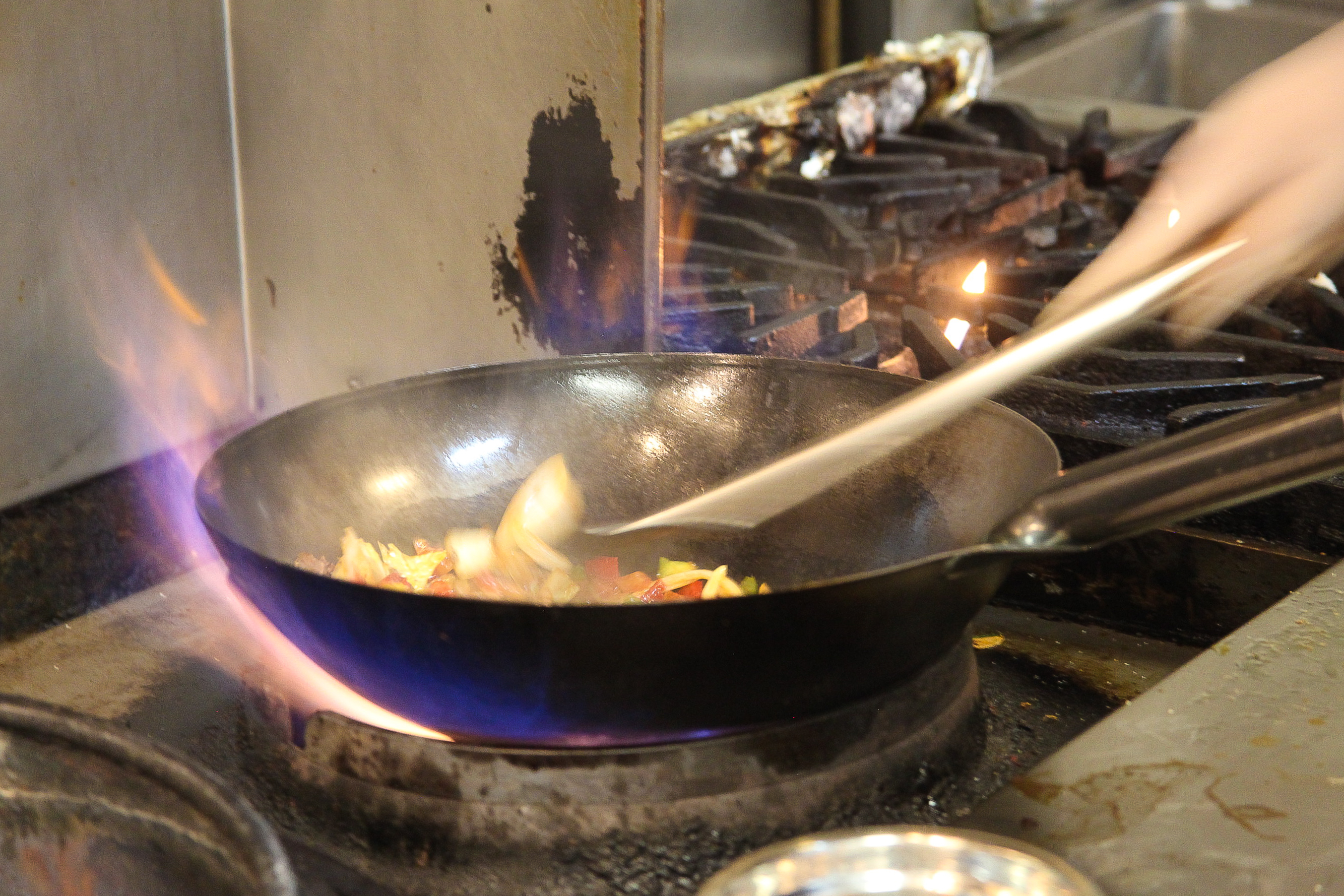
But Almira kept trying, testing out noodle recipes and other dishes, until one day she noticed a plate of potatoes she prepared had gone missing. Her father had eaten it, mistaking it for her mother’s cooking. “That gave me even more confidence,” Almira said.
And yet, Almira was still determined to take a different route from her parents. By age 19, she was on track to get a university degree when her life took an unexpected turn.
Her sister Kalbi had moved to California five years earlier and had recently been in a car accident, injuring her lower back. She was struggling to manage her daily life. Their parents suggested Almira join her older sister abroad, to help her recover.
“That was not an easy decision for me to make,” Almira said. She had already made plans to pursue an internship. Graduation was within reach. Leaving meant starting again from zero, in a foreign country she had never seen before.
But ultimately Almira agreed. Kalbi, she thought, “is the only one I have other than my parents, and she’s alone in somewhere else suffering”. So she boarded a flight to San Francisco.
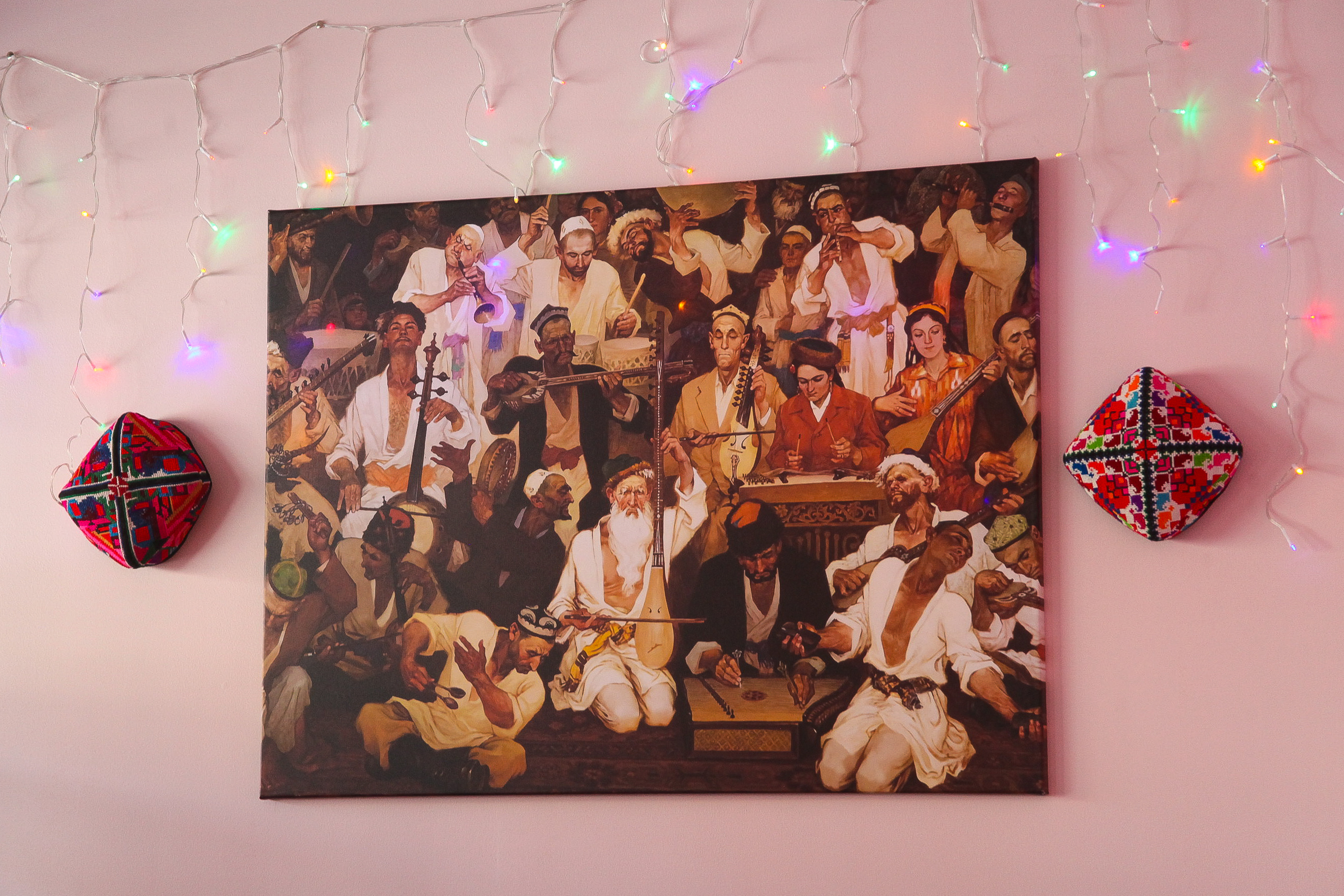
Azat, a community leader who goes by the pseudonym “Freedom”, remembers the isolation he too felt when he first arrived in the San Francisco Bay Area.
The Uyghur American Association estimates only 8,000 to 10,000 members of the diaspora live in the US, with the majority clustered around Washington, DC. Azat believes only 200 to 300 live in the Bay Area.
“When I first moved to Bay Area 15 or 16 years ago, we never talked about Uighurs,” Azat said. “You never heard this word, Uighur.”
He laughs that a friend in Los Angeles was protesting outside the Chinese embassy when people approached him about the sign he was carrying. “Free Uyghur,” it read. But the passersby thought it meant something different. “Where’s the free yoghurt?” they asked.
Azat ultimately took to social media to find other Uighur people in his East Bay community. “I was a little homesick at that time,” he said.
Uighur people, he explained, are very social – and food is a central part of their gatherings. He found himself longing for the taste of home in the southern part of East Turkestan, where the salty land of the desert basin gives cattle a distinct taste: “We joke and say our lambs are already marinated before they go to slaughter.”
But gradually, people started to respond to his social media posts. And Azat credits Uighur restaurants with helping him to meet new people too: “I’ll go there and I might end up meeting Uighurs, you know?”
Now, Azat is part of a system of families who take turns driving from the San Francisco Bay inland to agricultural cities like Vacaville, where they buy whole lambs direct from local ranches to share.
Uighur cuisine is part of the glue that binds them all together, Azat explained: “This culture, nobody forced it, but it was somehow preserved, you know?”
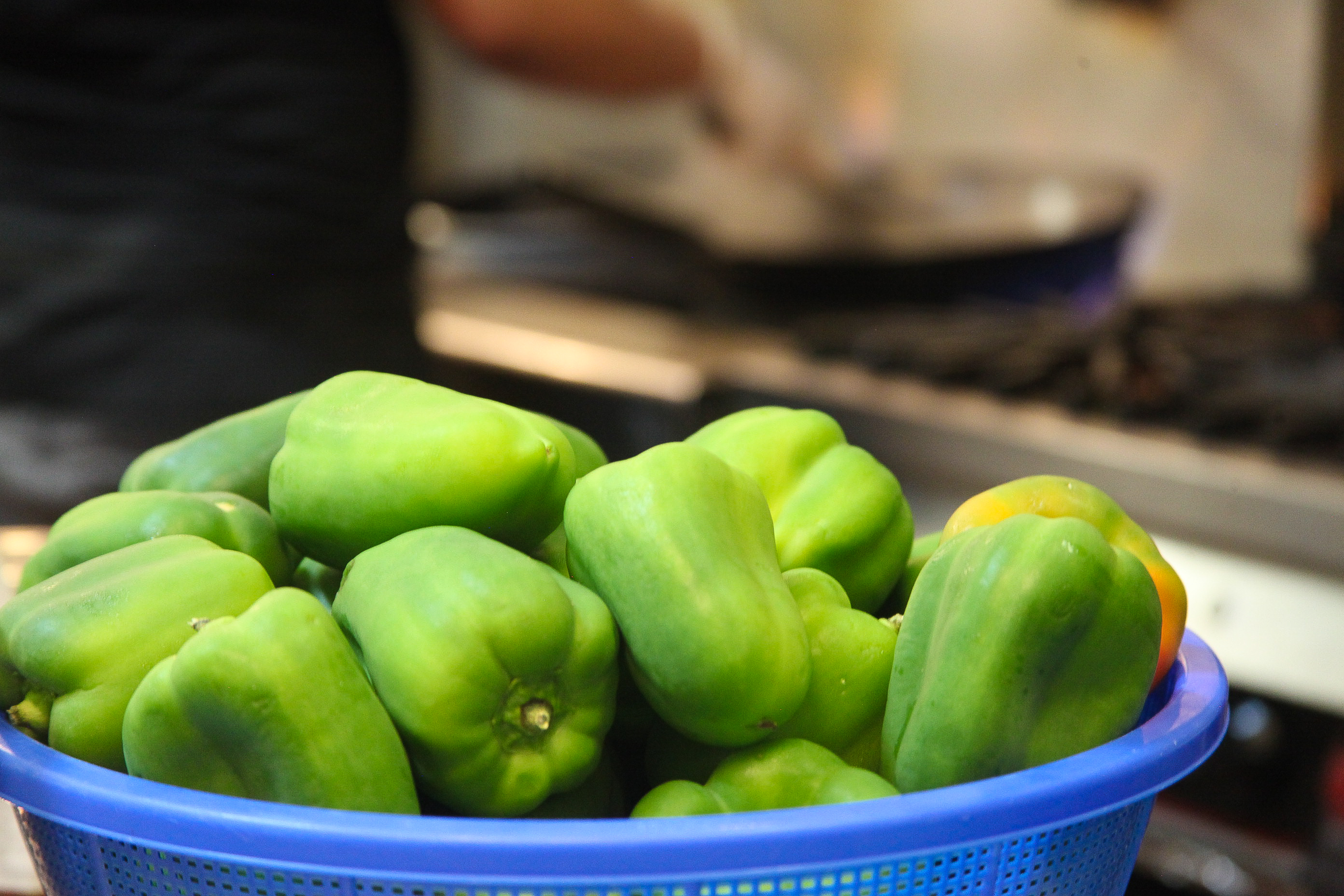
For Almira, there was more than just culture shock waiting at the San Francisco airport. The sister she had not seen for six years stood waiting there too.
In Almira’s mind, Kalbi was still the pesky older sibling – the tall one, the athletic one, the one who used to bounce her head like a basketball as they walked home together. But the person she saw at the airport looked much older than she remembered. Almira started to cry. So did Kalbi.
From the airport, Kalbi took Almira home to the state capital of Sacramento, where she ran a limousine business at the time. As they drove, Almira was struck by how small cities were in the US. They seemed like villages compared with the metropolises she had seen in China, where a single city could hold as many as 24 million people.
And she was likewise underwhelmed by the culinary offerings in Sacramento. “They don’t use a lot of sauce or seasoning,” Almira recalled.
Sometimes Almira’s cravings for home were so great that she and Kalbi would pile into the car, just like they did as children, to drive eight hours south in search of the perfect cold noodle dish in Los Angeles.
The sisters would also make shorter treks to the San Francisco Bay Area to visit the Uighur restaurants there and stock up on meals. “Back then, that was my happiness,” Almira said.

But when the COVID-19 pandemic struck in 2020, the Uighur restaurants in the Bay Area all but disappeared. Yolwas Hashim ran one of the last remaining ones in the city of San Jose, at the southernmost point of the bay.
A former e-commerce employee with master’s degrees in business and finance, Hashim saw an untapped market for Uighur food in San Jose – but from the get-go, the restaurant business was tough.
He and his brother Xukrat, a chef, would sometimes work until 4am to finish the prep work for the next day’s meals. And, unlike his brother, Hashim had no culinary training: “I was just learning it from zero.”
Their restaurant, Kusan Uyghur Cuisine, opened in 2018. Two years later, the pandemic forced it to close its doors. “When this happened, we all thought it was going to be just one or two months or three months,” Hashim explained. But instead, the pandemic stretched on and on.
To survive, the restaurant shifted strategy, away from dine-in meals and towards delivery options.
“We started opening on all the platforms we can open on,” Hashim said, ticking off the names of food delivery apps like DoorDash, Grubhub and Uber Eats. He rented an extra kitchen in San Francisco just for online orders.
And gradually his business losses slowed. For Hashim, it has been a labour of passion. “Food for people is where the energy is from, where you make your emotions,” he said.
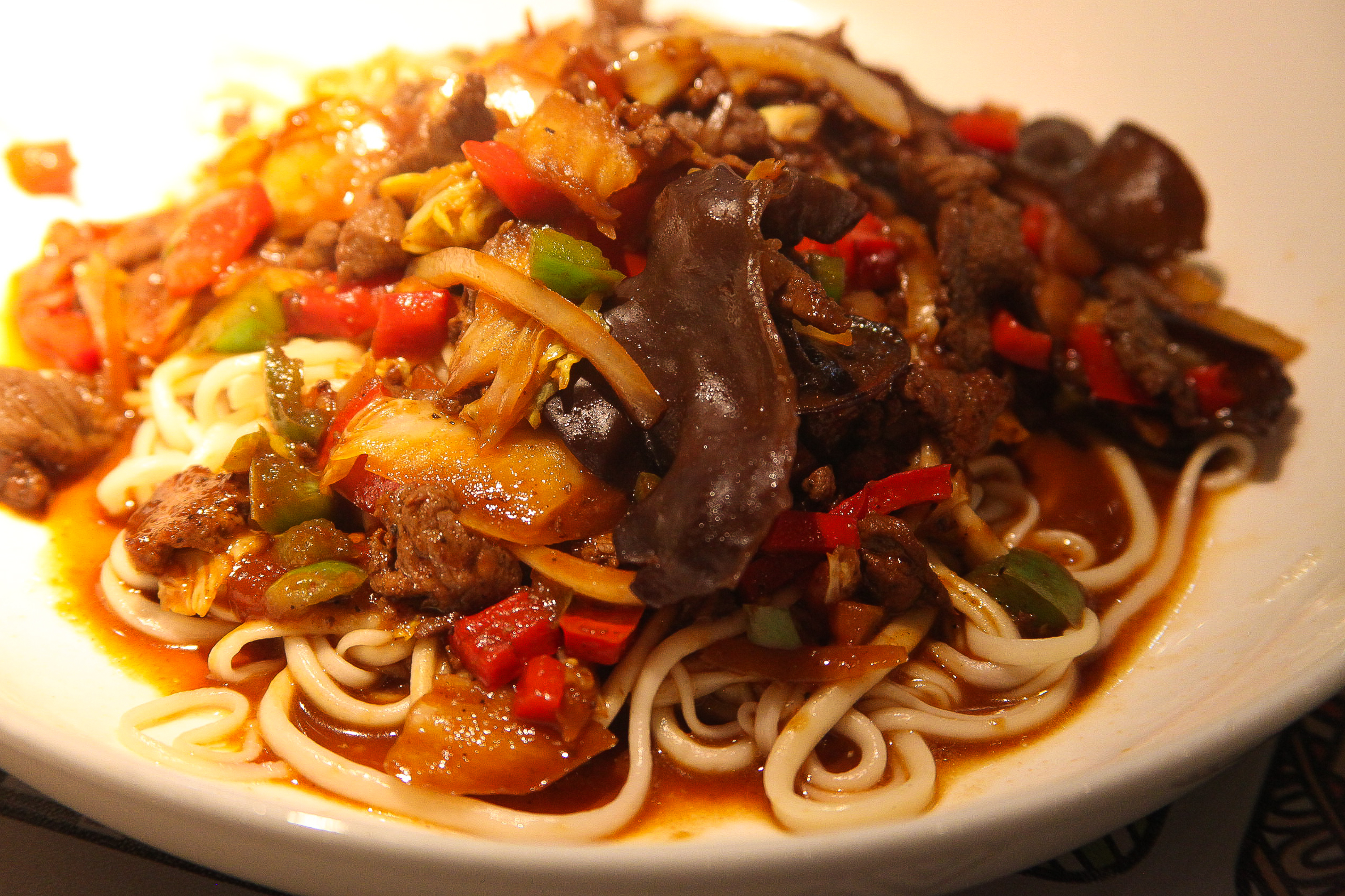
Hashim also believes it can serve as an ambassador for Uighur identity: “The food is a really easy way to present our Uighur culture and let people know who we are.”
He has woven his personal history into Kusan’s menu, he explained. At the bottom, in the dessert section, there is a yoghurt he baptised “Amine”, after his mother.
It transports him back to his hometown of Ürümqi, where grandmothers would sell bowls of homemade yoghurt with sugar on top on the street. His mother made her own version, a treat for Hashim when he was little.
It would sneak up on Almira too: the memories of home, its tastes and smells. Sometimes she would catch the scent of warm kebab in the air, only to realise there was none around.
Homesickness, she believes, “starts with food”. As the pandemic decimated the Bay Area’s Uighur restaurants, Almira and her sister started to mull over the possibility of starting their own. Kalbi would handle the noodles and the money, Almira the rest.
Their restaurant, Mrs Khan, opened in December. Almira confessed the sisters had been scoping out the location in the Bay Area city of Menlo Park since 2020 after a Japanese barbecue restaurant left the space vacant.
“I would be laying on the window, looking inside, trying to take a peek,” Almira said.
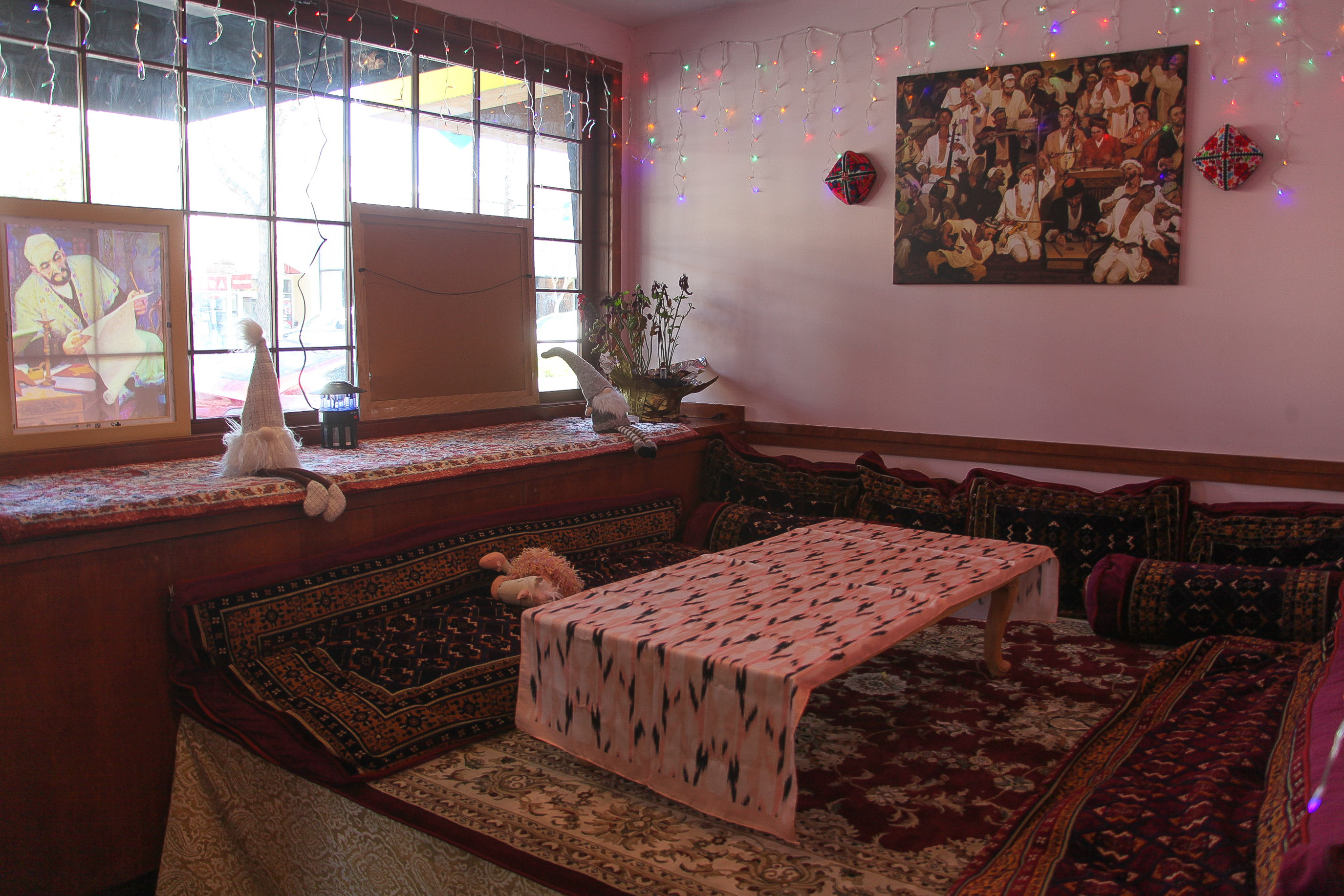
Now, the barbecue has been transformed into a dining room decorated with walls of pink fabric roses and two traditional doppa hats – raised, colourfully embroidered skullcaps – hanging near the entrance.
Plump teapots, fragrant and warm, trundle off to waiting diners. In the kitchen, flames burst beneath woks, and noodles are coiled and brushed with oil in a seemingly endless spiral.
Those noodles are for the stir-fries and the chicken korma dish, Almira explained, her long black hair tied back in a ponytail as she whips around the restaurant.
For the other signature noodle dish – the laghman – the dough is pulled to five, even six times its length, to the point where it has to be wrapped in loops like skeins of yarn. Those noodles are then bathed in a sauce, elusively tangy in its marriage of spices, with notes of cumin and star anise.
It’s a taste of home in a quiet suburban downtown and, nearly every day, Almira finds someone from the Uighur community in her dining room. Even in the lull between meal shifts, she dashes from the dining tables to the kitchen, speaking a mix of English, Spanish, Mandarin Chinese and her native Uighur, depending on whom she meets.
When asked why she opened the restaurant, Almira usually answers, “For people who are like me.”
But it goes beyond that, she added. Through her food, she wants people to know that someplace, somewhere, there is a people unique in the world – and that their traditions, history and culture live on, even in Menlo Park.







